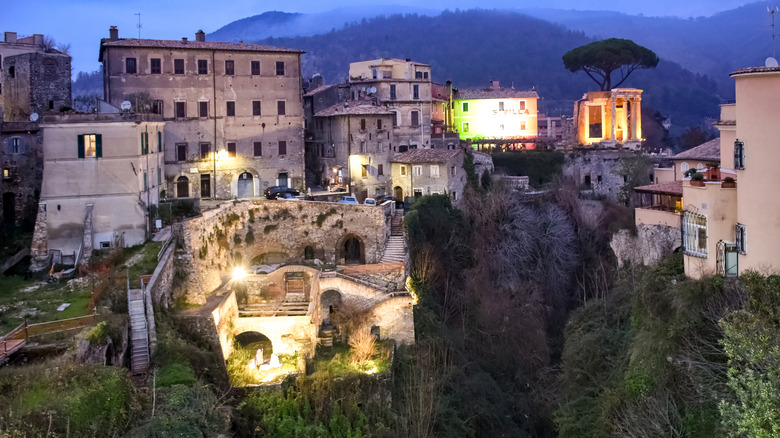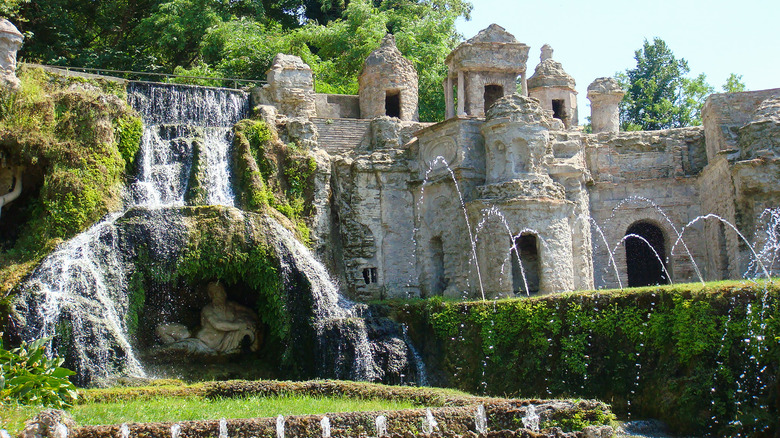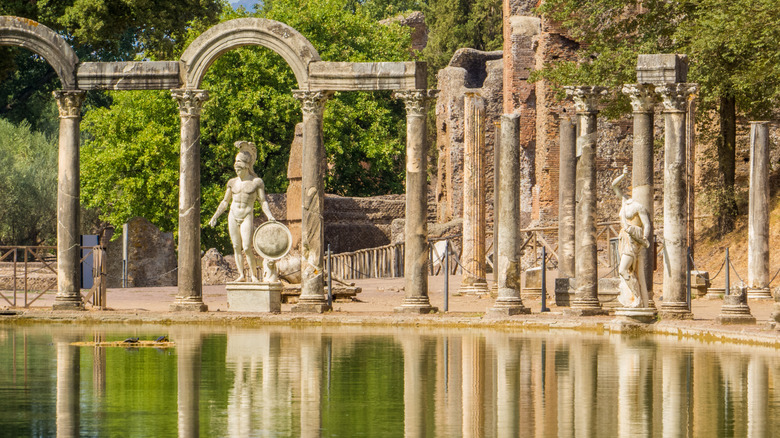Escape Rome's Urban Intensity At This Hidden Gem Hill Town Rick Steves Recommends
Rome obviously brings in millions of tourists every year. While its popularity is definitely warranted, social media videos showing the packed streets around landmarks like the Trevi Fountain have called attention to just how many people visit the Eternal City. Tourist masses aside, Rome still houses Italy's highest population — around 4 million people. There are some green destinations in Rome that will make you forget you're in Italy's busiest city and a solid number of hidden gems for tourists who hate crowds, but perhaps a venture just outside of the Italian capital can offer the best break from city life.
"When I'm visiting Rome, I like to travel about 18 miles east to the hill town of Tivoli, a popular retreat since ancient times," travel expert Rick Steves explained on his website. "Tivoli [is] still Rome's great escape." This town has seen changes since it first became a quaint getaway for notable Roman figures, but the essence of what such figures created for the town remains. There are elaborate gardens, ancient statues, and multiple types of architecture on display in Tivoli.
Step back into Renaissance Italy at Villa d'Este
Tivoli is less than an hour from the Rome Termini train station and trains leave multiple times per day. This helps make it one of the best cities for a day trip if you're staying in Rome. Cross the river from the train station to explore the small winding streets of this hilly town. The streets give way to major landmarks like Chiesa di Santa Croce in Santa Maria Maggiore and the Vialone (Terrace) right behind it.
The Vialone overlooks the fairytale-like Villa d'Este, a UNESCO World Heritage site. This immaculate Renaissance-era structure which Rick Steves calls "simply beautiful and relaxing," was once the home of Cardinal Ippolito II d'Este of Ferrara. He was a fan of all things opulent and wanted to continue enjoying a lavish life when he became mayor of Tivoli in 1550. After gaining this title, the villa's architects created his huge palace with unique cascading fountains and gardens. The final product of these gardens became influential in garden designs all around Europe. Head inside the palace to see the cardinal's living spaces and room after room decorated with paintings depicting various religious, Ancient Roman, and nature-themed imagery.
Visit what was once an emperor's home in Tivoli
The fairytale continues with Rocca Pia, a 15th century castle complete with towers and a drawbridge. Rocca Pia has seen armies from multiple countries and was even a prison from the rule of Napoleon until 1960. While the public is not able to go inside, its exterior is in near-perfect condition and well worth a gander for at least a few moments.
Emperor Hadrian from the second century AD spent his time in Tivoli more so than in Rome, similar to how King Louis XIV often stayed at his palace in Versailles outside of Paris. This is why Tivoli is sometimes called the "Versailles of Ancient Rome." This emperor created a villa of over two dozen buildings from libraries to temples and frequently hosted friends and maintenance staffers. Outside visitors have taken bits and pieces of décor in the centuries since, but there are still plenty or archways, statues, and columns similar to those seen on quintessential Roman and Greek buildings. The remnants make up around 100 acres of peaceful exploration and is also a designated UNESCO World Heritage site.


